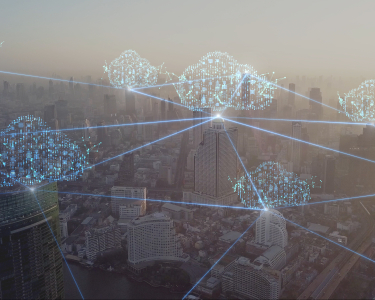Personalization in Energy & Utilities: Transforming Customer Acquisition & Retention that Ensure Competitive Edge

While we talk about emerging market trends, today, customer preferences and needs are changing the dynamics, which hold key to success in rapidly changing environment. Energy and utility is no exception. Thus far, a formidable part of new age business strategies are focused on redefining relationship with the customer through contextualisation of evolving trends, generating demand, developing sales enablement tools and agendas, aligning profitability and customer retention schemes, and underpinning overall business growth objectives.
While the costs for acquiring new customers remain high (considering new account setup, advertising, promotional expenses, and so on), prospect cost associated with customer churn is equally high. Statistics and numbers are always interesting – they provoke contradictory thought against trodden or pervasive inclinations. It is undoubtedly important to understand how an organisation sets its priority and balance acts between acquisition and retention for sustainable growth. Most agree that for building customer reliability the first step is to create strong customer base and then retain those customers with differentiated personalised experience to turn them into brand advocates –two complementary goals.
Building the right strategies to capture market share
Rising deregulation in utilities like most consumer-oriented industries has led to the influx of new competition and steady rise in customer churn. Supplier change is accelerating under the influence of digitalization, through price-comparison websites - as a result, utilities are stressed with their pricing and profits. Since the operating margin falls, utilities broaden their product and service portfolio to capture market share. While doing so, having a right mix of acquisition or effective cross/upsell plan plays critical role to firm up financial health and ensure improved cash flow, avoiding unnecessary debt scenarios. What this means is utilities can shift their focus from only volume generation where the greater risk is associated with low value customers to carefully targeting high value consumer segments. It will enable them to outbid incumbents in current landscape by putting larger emphasis on building valued relationship with customer or pushing solutions, which help avoid signing up low value/disloyal customers, who are frequently switching suppliers for better offers, ultimately pulling down margin and raising churn rate. All such quantitative, qualitative and holistic approach should form a basis of right strategic plan in achieving overall business objectives.
The advent of personalisation in utilities
On the brighter side, companies today have a new tool to help them retain old customers and acquire new ones; ‘personalisation’. Companies are targeting individual customer or a segment using data mining and statistical models. It allow them to gain powerful insights on customer behaviour and cater to specific requirement that in turn develop profitable customer base and prevent churn.
It is certain that utilities need to work harder to secure and grow their wallet share by preventing churn while having a focussed effort to tap into new market opportunities to disrupt the market further, differentiate itself and return to overall growth.
Utilities are increasingly focused in understanding what drives customer loyalty as it is critical to company’s financial health. Customer stickiness depends on many factors and they switch because of high, unfair and misleading pricing, inconvenience in services offered by supplier, core service commitment failure, responsiveness to service requests and availability of better alternatives. The new breed of digitally savvy customers seek ‘itemized energy invoices’ showing ‘usage/consumption by appliance’, proactive energy insights and saving recommendations, alerts during a billing cycle, self -reliant services, and so on. Utilities struggling with customer churn can leverage learnings from industries (telecom, retail, consumer product goods) to strengthen loyalty, customer lifetime value (CLTV) and uplift sales from personalisation.
Market leaders like Tech Mahindra have a service philosophy to support utility acquisition and churn management processes is holistic; encompassing next generation tools, frameworks, and our own IPs and accelerators. The roots of digital-led personalisation have surfaced from industries like ecommerce, retail, and telecom. They tap into their customers’ behaviour to capture valuable information on their preferences, attitudes and willingness to pay.
Making personalisation ‘intelligent’
There is perceived value in adapting to ‘intelligent customer journey mapping’ blended with utility customer lifecycle-led approach while designing efficient sales/acquisition, retention, and churn processes for customer. It sets a strong foundation for the personalisation approach. At each step of customer’s journey, digital, intelligent automation and analytics interventions are infused to foster innovation. It has become prevalent that journey mapping is the best practice of assessing, visualizing and mastering customer experience (CX). It not only helps in viewing a product/service from a consumer’s perspective but also identifies improvement opportunities faster. It provides a good picture of the customer issues while identifying gaps in service and communication, and thereby providing the chance to fill those gaps with proactive resolutions to deliver better CX.
Moreover, accurately mapping the ideal customer journey demands customer needs identification, as in today’s omni-channel settings, customers interact via multiple ways and it is imperative for organisations to adapt newer technologies and embed them in every touch point of the customer journey. The key benefits can be a quick win for gaining and sustaining customer loyalty. It encourages a cross departmental collaboration, which is required to fix the overall CX. The whole idea is to get rid of any cause of inconvenience to the customer right from commencement of the journey until it ends.
An end-to-end approach for utility customer care required to be platform driven which seamlessly executes CX vision/design, materialises transformative actionable plan, and empowers workforce, customers while lowering effort. The enabling system architecture of a preferred platform helps customer service leaders develop boardroom ready business cases for transformation (see Figure 1).

Figure 1:Illustrative System Architecture of Platform Driven Digital Customer Service
Value levers for sales and retention
Proactive Care via analytics
- Right lead identification
- Contextual and personalized conversation
- Identifying drivers leading to order fallout
- Best time to call customer
- Lead management
- Churn reduction
Digitalization
- RPA/automation
- Better dialer strategy
- Consistent processes across LOBs reporting and dashboard
People/Operations Excellence
- Gamification enabled training
- Performance based scorecard
- Commission framework linked to roles and responsibilities Quality and continuous Improvement
Benefits of this approach
Improvement in revenue per call by 7-8% via right analytics, contextual conversation and digital tools
Improvement in leads attempted by 5% via right dialler strategy, effective planning, productivity tracking and RPA
Reduction in churn by 12%, cross-sell improvement by 30%, outbound sales improved by 3%
Improvement in connect rate by 18% and right party contact improved by 5%
Today’s digital platform led and transformative utility customer management solutions are enabled by intelligent process mining, automation, powerful artificial intelligence/machine learning (AI/ML), insight driven analytics, which support quick and accurate analysis of high bill calls, next best action recommendations, consumption/usage insights and 360-degree engagement view. It allows agents to see every touchpoint in customer journey.
This in turn can:
- Drive strategic goals: Maximizing ROI through right customer enrollments in products, services tariff plans and driving utility marketplace adoption through highly targeted campaigns, tips and recommendations
- Reduce cost-to-serve: Resolutions via actionable insights that lead to fewer complaints and repeats
- Enhance CSAT: Lowering customer effort while delivering personalized recommendations on usage or even tailored offerings, rebates, and incentives

Figure 2:An ideal value proposition for the acquisition and retention journey
Loyal customers are critical assets for an organisation; and these organizations are increasingly recognising the significance of reliability, as such paying complete attention to develop customer retention and loyalty programs. The vital part of customer retention efforts is to ensure engaging relationships with value-adding customers, more so manage utility customers throughout their lifecycle from the point of acquisition to regular customer maintenance and billing until the renewal and/or retention of customer base. The major objective remains to provide the best quality of service to customers as measured by Customer Satisfaction Score and NPS for the lowest possible cost – additionally ensuring seamless, flexible, and agile process deliveries with a culture of continuous service improvement that addresses ever-evolving customer needs with a greater efficiency and effectiveness at every transaction.

Sailesh has over 20 years of experience within the ITES business in varied capacities and has rich domain expertise in the energy and utilities vertical, globally. He spearheads end-to-end digital and industry-leading transformation solutions within the E&U vertical and horizontal business lines for TechM. He is a certified LEAN and Six Sigma practitioner and holds a PGDMM grade.
MoreSailesh has over 20 years of experience within the ITES business in varied capacities and has rich domain expertise in the energy and utilities vertical, globally. He spearheads end-to-end digital and industry-leading transformation solutions within the E&U vertical and horizontal business lines for TechM. He is a certified LEAN and Six Sigma practitioner and holds a PGDMM grade.
For any queries related to TechM Energy and Utilities solutions, write to SD00753572@TechMahindra.com.
Less







